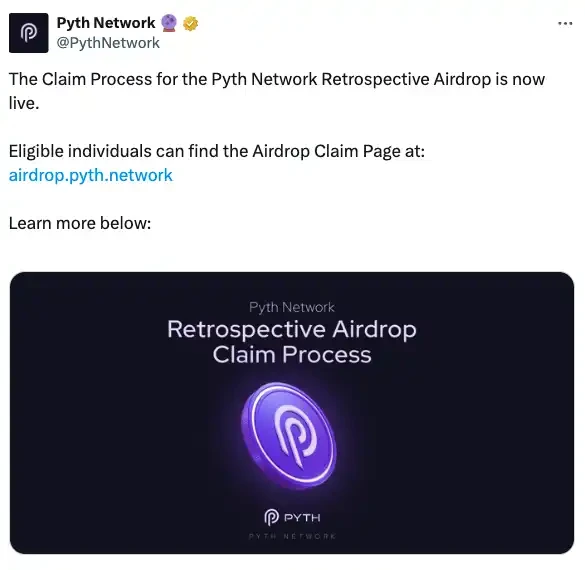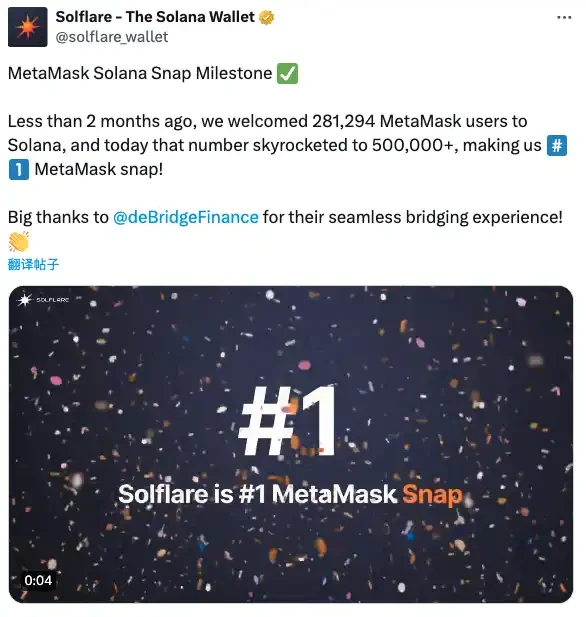Original title: ETHs DeFi Scene Eyes Solana
Original author: Bankless
Original translation: Rhythm Worker, BlockBeats
Solana has solidified its position as a top blockchain after rising from the ashes of the FTX/Alameda debacle. In the ensuing community-led resurgence, the sweat of the Solana native team has driven the wheels of progress, but with the steady growth of SOL prices and DeFi metrics within its ecosystem, non-Solana native protocols are also ready to seize this opportunity to take off.
Solana Native Protocol Paves the Way
SOL’s surge from a low of $8 in December 2022 to $210 two months ago was one of the most dramatic comeback rallies in cryptocurrency this cycle, but wealth creation in the ecosystem is not limited to holders of its native token.
Developers in the Solana ecosystem continue to create emotional highs in the market, starting with the PYTH airdrop in November, which distributed tokens on Solana to addresses that interacted with the Pyth oracle on 27 networks (including Ethereum and its L2) and marked a turning point, providing users from other ecosystems with direct economic incentives to support testing Solana.

Soon after, Jito Labs, Solana’s native liquid staking protocol, conducted its own airdrop, rewarding eligible wallets that earned more than 100 points for the simple act of holding a jitoSOL deposit receipt with at least five-digit token allocations. The dizzying allocations Jito users received turned Solana into a premier destination for airdrop hunting and catalyzed mass adoption of points-based incentive systems by fledgling protocols within their own ecosystem, which have proven highly successful in attracting users and their funds.
A gradually changing landscape
While the native protocol lays the foundation for Solana’s mainstream cryptocurrency acceptance, Solana is gradually becoming a “host” for Ethereum developers.
This transition may occur at a snail’s pace, but there’s no doubt that migration from Ethereum to Solana will happen as more projects begin to realize the massive on-chain activity within the Solana ecosystem and are eager to take advantage of this opportunity.
Render, a decentralized computing sharing network, fully supported the Solana vision early on and chose to migrate its tokens to the SPL standard in November. And although MetaMask is often considered a laggard in improving user experience, the project was one of the first Ethereum native applications to introduce Solana compatibility, launching Snaps last September, enabling users to choose applications to enter the Solana ecosystem directly from MetaMask. To date, the Snaps integration of Solanas native wallet Solflare has attracted more than 500,000 users.

Additionally, there are many native lending markets on Solana, but none have the same level of time-tested security as Ethereum blue-chip lending destination Aave. In an effort to leverage its brand as a competitive advantage for Solana, Aave DAO approved a January temperature check with an 83% pass rate to deploy a minimum viable version of its V3 isolated money market through the Neon EVM, a fully compatible Ethereum development environment for the Solana blockchain.
Last Wednesday, a community-led proposal appeared on the governance forum of GMX, a perpetual contract trading platform for the EVM ecosystem, seeking to build an independent exchange deployment called GMSOL on Solana. GMSOL will exclusively use GMX tokens for all value measurement and storage, while implementing a GMX repurchase mechanism and allocating a large portion of fees back to the GMX treasury to build the GMSOL treasury.
In exchange for the dividends of this new Solana-native deployment, the GMX DAO is expected to cover all costs associated with auditing the protocol and grant a license to copy and use its front-end code.

In addition, the market generally speculates that Ethena and Pendle, two leading Ethereum projects, will be deployed to the Solana ecosystem in the near future. These two projects have flourished in recent months thanks to the improvement of the interest rate environment in the crypto market.
Long-term trend
Applications serve users, not blockchains, and while many blue-chip protocols should have a high bar when considering new deployments, they would be foolish not to flock to environments where users and activity exist. On networks lacking protocols, users will inevitably seek out alternatives, putting the market share dominance of existing applications at risk — especially as their chains begin to cede their market share to competitors.
Ethereum and Solana have taken very different approaches to scaling, with the former opting for sharding the network so that anyone can operate a validator, while the latter prefers a unified state that will work with a single shard. While greater decentralization at the validator level helps maintain the integrity of the Ethereum network, it certainly has some drawbacks that make Solana’s alternative vision very attractive in some ways.
Right now, the crypto industry is still in an experimental phase, which means we really don’t know what it will look like in 10 years, but just as investors can prudently diversify their portfolios to reduce risk, applications can also diversify their blockchain deployments to maintain their market share.
Developers seeking to maximize success must acknowledge that there is no inevitable center for the future of finance, and they should deploy their applications accordingly, whether it is Ethereum, Solana, or even the Monad of EVM+SVM and custodial settlement networks operated by banks. The crypto industry must cross a huge chasm of uncertainty to move from infancy to the final state, achieve true adoption, and bring trillions of dollars of traditional assets on-chain.
Until then, application developers who blindly succumb to chain loyalty will lose money and market share at the table.
This article is sourced from the internet: Bankless: Ethereum’s native protocol is fleeing to Solana
Related: 4 Cryptos That Could Hit New All-Time Highs in May 2024
In Brief Bitcoin (BTC) is one of the closest tokens to forming a new all-time high propelled by the halving bullishness. BNB Coin (BNB) is merely 12% away from charting a new ATH marked at $686 after almost three years. Bitget Token (BGB) and Ondo (ONDO) are both consolidated under their ATHs, standing 15% and 22% away, respectively. Many crypto assets have noted exceptional rallies throughout March and April and have inched close to posting new all-time highs. BeInCrypto analyzes the potential digital assets that could see another All-Time High (ATH) in May as the market enters the post-halving month. BNB Is the Closest to Breaking a 3-Year-Old Record BNB Coin, the native token of the world’s biggest crypto exchange, Binance, has been attempting to breach the previous ATH of…






